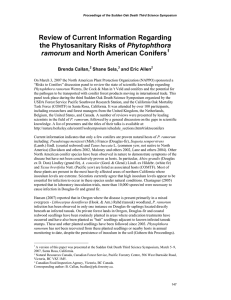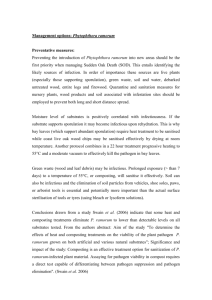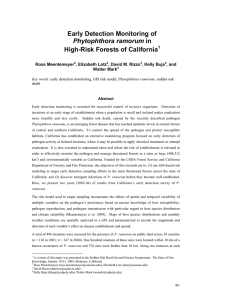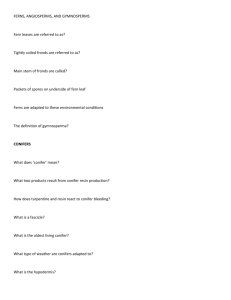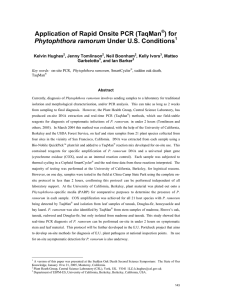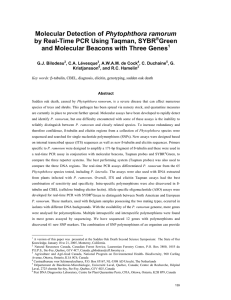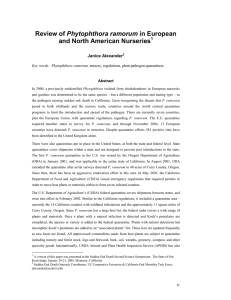Susceptibility of Conifer Shoots to Infection by Phytophthora ramorum G.A. Chastagner
advertisement
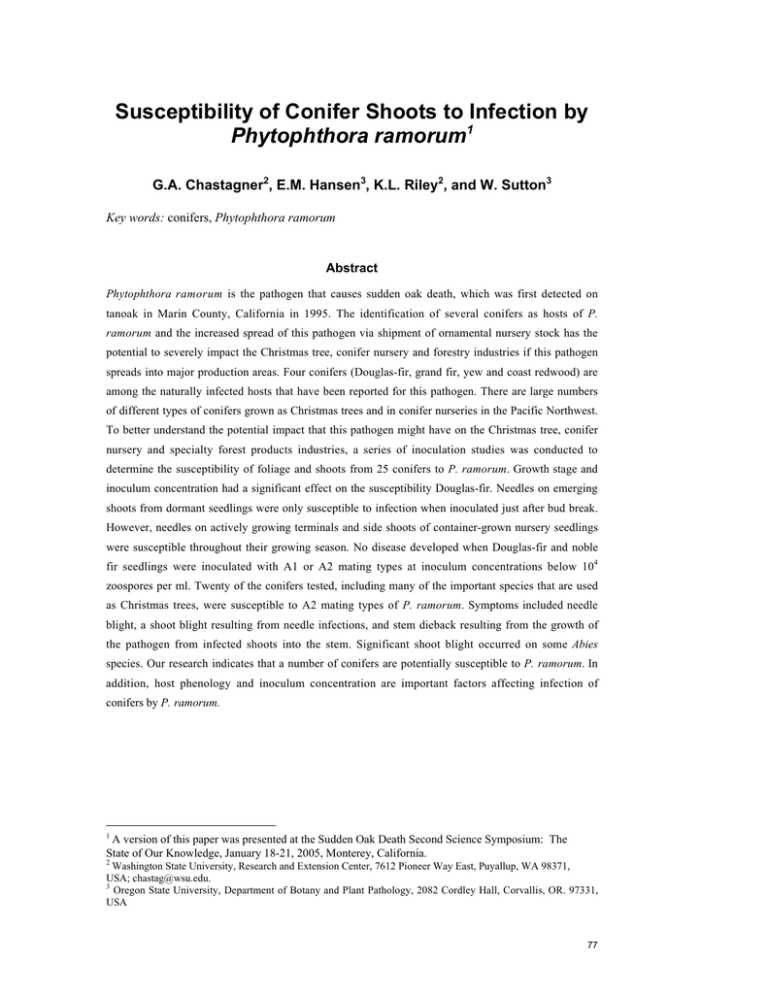
Susceptibility of Conifer Shoots to Infection by Phytophthora ramorum1 G.A. Chastagner2, E.M. Hansen3, K.L. Riley2, and W. Sutton3 Key words: conifers, Phytophthora ramorum Abstract Phytophthora ramorum is the pathogen that causes sudden oak death, which was first detected on tanoak in Marin County, California in 1995. The identification of several conifers as hosts of P. ramorum and the increased spread of this pathogen via shipment of ornamental nursery stock has the potential to severely impact the Christmas tree, conifer nursery and forestry industries if this pathogen spreads into major production areas. Four conifers (Douglas-fir, grand fir, yew and coast redwood) are among the naturally infected hosts that have been reported for this pathogen. There are large numbers of different types of conifers grown as Christmas trees and in conifer nurseries in the Pacific Northwest. To better understand the potential impact that this pathogen might have on the Christmas tree, conifer nursery and specialty forest products industries, a series of inoculation studies was conducted to determine the susceptibility of foliage and shoots from 25 conifers to P. ramorum. Growth stage and inoculum concentration had a significant effect on the susceptibility Douglas-fir. Needles on emerging shoots from dormant seedlings were only susceptible to infection when inoculated just after bud break. However, needles on actively growing terminals and side shoots of container-grown nursery seedlings were susceptible throughout their growing season. No disease developed when Douglas-fir and noble fir seedlings were inoculated with A1 or A2 mating types at inoculum concentrations below 104 zoospores per ml. Twenty of the conifers tested, including many of the important species that are used as Christmas trees, were susceptible to A2 mating types of P. ramorum. Symptoms included needle blight, a shoot blight resulting from needle infections, and stem dieback resulting from the growth of the pathogen from infected shoots into the stem. Significant shoot blight occurred on some Abies species. Our research indicates that a number of conifers are potentially susceptible to P. ramorum. In addition, host phenology and inoculum concentration are important factors affecting infection of conifers by P. ramorum. 1 A version of this paper was presented at the Sudden Oak Death Second Science Symposium: The State of Our Knowledge, January 18-21, 2005, Monterey, California. 2 Washington State University, Research and Extension Center, 7612 Pioneer Way East, Puyallup, WA 98371, USA; chastag@wsu.edu. 3 Oregon State University, Department of Botany and Plant Pathology, 2082 Cordley Hall, Corvallis, OR. 97331, USA 77

